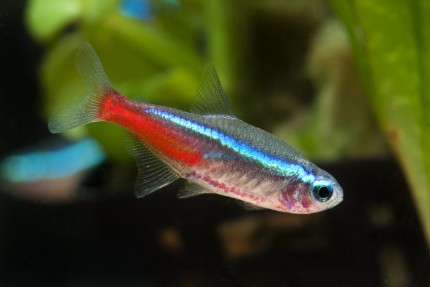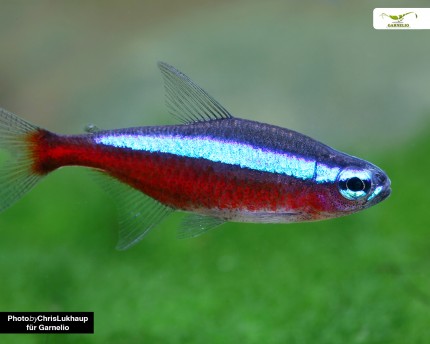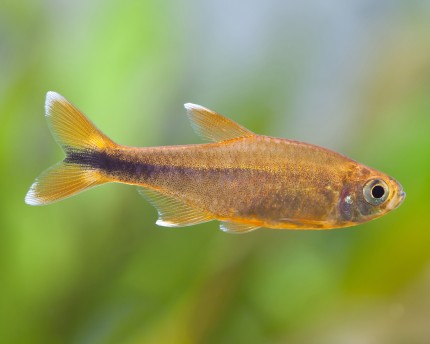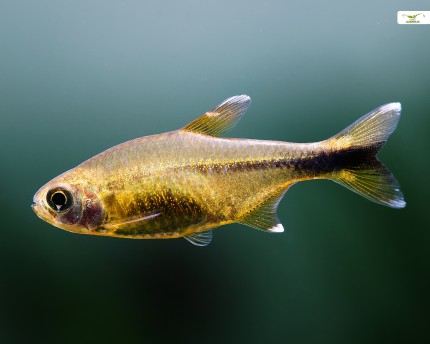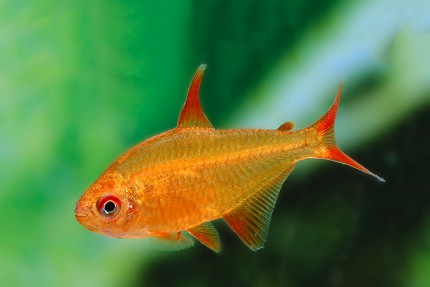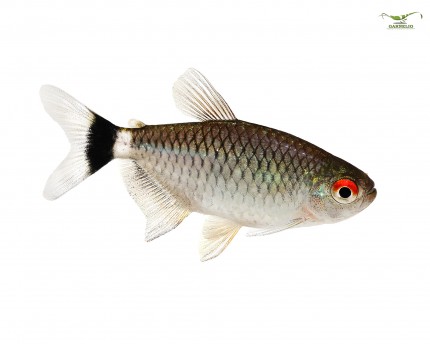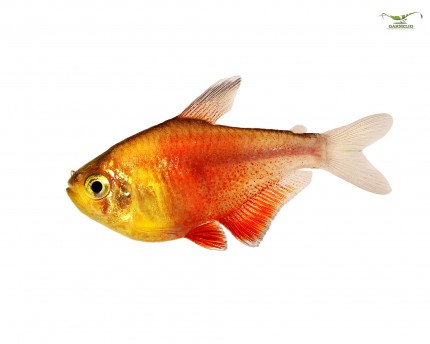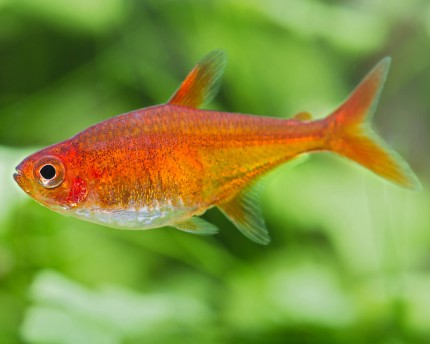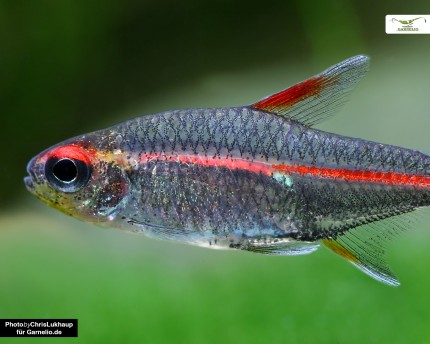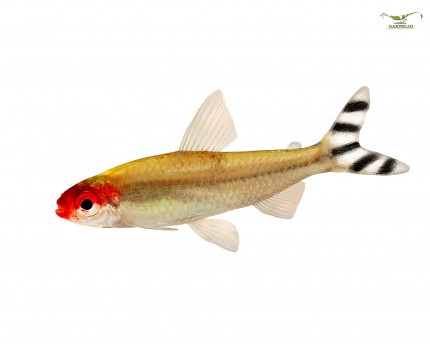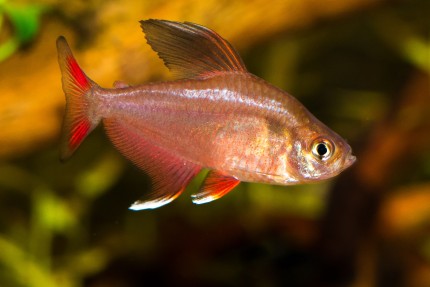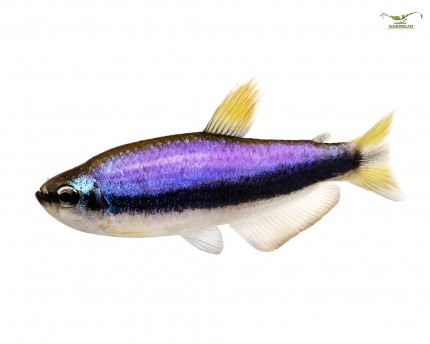Tetras in nature
The tetras are an enormously large order among bony fishes with over 1900 species. Many of the smaller species are successfully kept in the aquarium and even bred. Mostly the tetras have an elongated, typical fish shape, but there are also the high-backed species like the Red of Rio or the Red-Blue Columbian. However, laterally flattened are all these aquarium fish. Their body is covered with scales. Tetras are very recognizable by their adipose fin, a small fin just before the base of the caudal fin on the back. Because there are so many species, not much can be said about the habitat - however, many species especially popular in aquaristics come from soft, acidic water. They like dense plant growth and roots that structure the aquarium well. The very colorful, iridescent species usually come from black water - bright colors help to easily recognize conspecifics. Especially with the Glow Tetra, the Red Neon and the Blue Neon the luminescent stripe is strongly pronounced. In nature they live in almost tea-brown water. By the way, during the night, when predators are on the way, many tetras fade almost completely - if you turn on the light in the aquarium at night, you will have completely different looking fish than during the day! This is not a cause for concern, but a completely normal protective mechanism - if you don't light up, you won't be seen as well by the hunter.
Behavior of tetras
By the way, among the tetras you can find one of the very few true schooling fish in freshwater, namely the redhead tetra. The other tetras also form a shoal when threatened, but scatter in a relaxed mood in small groups or are even solitary. During the mating season, some species even form mini territories, which is very atypical for a true schooling fish. A well planted aquarium helps to keep the stress level low. Swimming space in the middle should be sufficient in any case, most tetras like to swim, and many species also like to swim fast.
Tetras from South America
South American tetras come primarily from streams with blackwater or clear water and a low carbonate hardness and a fairly acidic pH. They therefore fit perfectly into planted aquariums, because our common aquarium plants usually also prefer soft to medium hard water. Here, humic substances in the water help keep the aquarium fish healthy, which they know from their natural habitats.
Tetras from Africa
The best known representative of the tetras from Africa in aquaristics is probably the iridescent colorful Blue Congo Tetra. It grows somewhat larger and needs a correspondingly large aquarium of 200 liters or more. Blue Congo tetras fit perfectly into an aquarium that has the African tropical jungle as its theme.
Breeding tetras in the aquarium
Breeding tetras in a community aquarium is possible, but difficult. It is better to grow the ornamental fish in pairs or one to two males with two to four females in a separate rearing aquarium. Ideally, condition the breeding fish with rich, good, high-quality live food before starting them. Soft, acidic water in the breeding aquarium, large water changes and good feeding simulate the onset of the rainy season and often trigger courtship and mating in the fish. Tetras are free spawners that simply release their eggs into the water. A thick layer of large pebbles or fine plants such as moss at the bottom will prevent the parent fish from eating the eggs right away. After spawning, all adult fish are caught out of the rearing tank because they would eat both the spawn and the fish larvae. For rearing, give the small baby tetras fine live foods such as slipper lizards or artemia euplii.
Socialization of tetras
As a rule, tetras are quite lively fish that need swimming space and can oppress very reserved aquarium mates. Therefore, they should only be added to similarly lively, agile fish. For example, tetras, catfish from appropriate habitats and South American cichlids complement each other very well in South American tanks. Depending on the tetra species, shrimp and especially juvenile shrimp tend to be food, but there are also very small tetras that leave shrimp alone once they reach a certain size. Small crayfish can usually be socialized well, large crayfish or crabs on the other hand may well hurt or even eat the aquarium fish.
Feeding tetras
Many tetras are omnivores, but some tetras prefer animal foods. You can't go wrong with good quality live food of a suitable size! As a staple food for omnivorous tetras, our NatureHolic staple feed for all ornamental fish in the aquarium is perfectly suited to their needs.
Conclusion
No aquarium without tetras! These attractive colorful fish can be kept well in soft to medium hard water, some species even in hard water, and enrich every aquarium with their bright colors and liveliness. Playing fish between green plants - that's how it should be, that relaxes and gives us much pleasure in our hobby, aquaristics. In Garnelio's online store you can buy healthy, vital tetras from South America and Africa in high quality.

